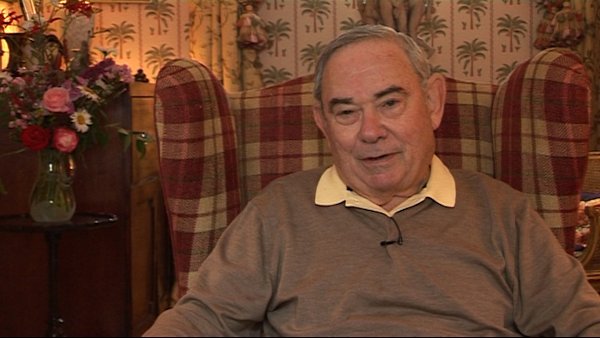NEXT STORY

The whale skeleton outside my lab
RELATED STORIES

NEXT STORY

The whale skeleton outside my lab
RELATED STORIES


|
Views | Duration | |
|---|---|---|---|
| 21. The history of the Wistar Institute | 116 | 02:12 | |
| 22. The Wistar rat colony | 104 | 02:42 | |
| 23. No stranger to the Wistar Institute | 92 | 02:18 | |
| 24. A difficult graduate year | 95 | 03:23 | |
| 25. The whale skeleton outside my lab | 79 | 02:08 | |
| 26. Isolating mycoplasma free in nature | 73 | 03:00 | |
| 27. The work of Edmund Farris | 241 | 03:18 | |
| 28. Opposition to artificial insemination | 151 | 01:51 | |
| 29. My first contact with virology | 80 | 01:52 | |
| 30. Moving to the University of Texas, Galveston | 70 | 01:57 |


I should say parenthetically, that by this time I had been persuaded not to stop at a Master's degree, but to continue on and get a PhD and do a proper research project that would be much greater of course than what was required for a Master degree. And so I had agreed to do this, also because by this time I had won a fellowship in graduate school that would pay, I think, virtually all of my... all of my tuition, and since I had some savings, and was still living at home, my costs were minimal.
I also should mention that these events of course occurred after I had returned from military service, and received in addition to the four years of stipend at Pen [University of Pennsylvania], I also received $75 a month in subsistence, which at that time was a substantial sum. In fact it allowed me to support my entire family for a number of years, because I should also mention that when I was a freshman student at Pen, my father, who had decided to join a cousin, and go into business with him in the dental mechanic field – that arrangement failed and my father was now left alone, he could not get his old job back with a major dental company that he had... that he had been at for, I think, 40 years, and so he had to go into business for himself, and consequently he needed a laboratory built. Fortunately I had a good friend who had a good knowledge of carpentry and plumbing and electrical work, and together we built my father a laboratory during my freshman year, which was very costly to me because I almost failed my freshman year since I had to spend so much time building that laboratory and setting it up for my father.
I also, as this time went by, had taken a course in accounting at the Wharton School, because I was not clear, as I said earlier, what my major would be at the university, and I thought I should do a little experimenting and go into... take a course in the business school. So I had a bit of training, at least a first year course in accounting, and so I could handle some of the business matters which I later turned over to my mother who ran, with my father, that business for the next few decades. But it was costly in respect to the damage it did to my grades during the first, perhaps on to the second year at Pen. But I recovered from that and did pretty well after that time.
Leonard Hayflick (b. 1928), the recipient of several research prizes and awards, including the 1991 Sandoz Prize for Gerontological Research, is known for his research in cell biology, virus vaccine development, and mycoplasmology. He also has studied the ageing process for more than thirty years. Hayflick is known for discovering that human cells divide for a limited number of times in vitro (refuting the contention by Alexis Carrel that normal body cells are immortal), which is known as the Hayflick limit, as well as developing the first normal human diploid cell strains for studies on human ageing and for research use throughout the world. He also made the first oral polio vaccine produced in a continuously propogated cell strain - work which contributed to significant virus vaccine development.
Title: A difficult graduate year
Listeners: Christopher Sykes
Christopher Sykes is a London-based television producer and director who has made a number of documentary films for BBC TV, Channel 4 and PBS.
Tags: University of Pennsylvania, Wharton School
Duration: 3 minutes, 23 seconds
Date story recorded: July 2011
Date story went live: 08 August 2012